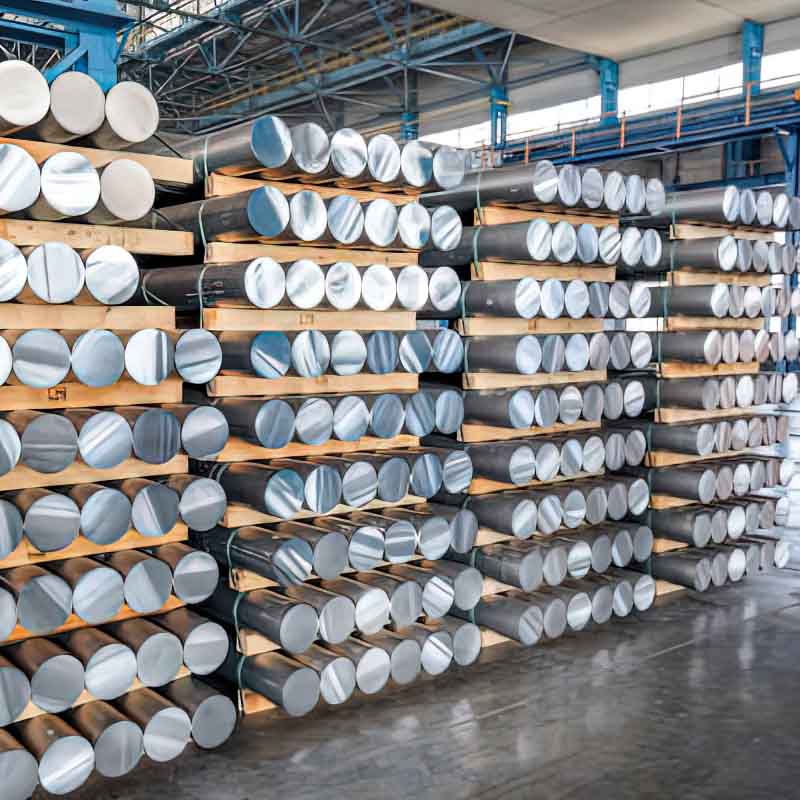Unveiling the Alchemy: Aluminum Processing from Molten Origins to Finished Marvels

Introduction
Aluminum holds a pivotal position in modern industry. Its unique combination of properties like lightweight, high strength, and excellent corrosion resistance has led to extensive applications. This necessitates an in-depth exploration of the entire aluminum processing chain, from the initial melting and casting to the final finished products.
1. Melting and Casting - The Genesis of Aluminum Profiles
1.1 Raw Material Selection
Common raw materials for aluminum processing include bauxite and recycled aluminum. The quality and origin of these materials significantly influence the final properties of aluminum products. For instance, bauxite with higher alumina content can result in purer aluminum, while recycled aluminum offers an environmentally friendly and cost-effective option, albeit with considerations for impurity removal.
| ALLOY | 6063(%) | 6061(%) | 6082(%) |
| Silicon Si | 0.20~0.60 | 0.40~0.80 | 0.70~1.20 |
| Iron Fe | 0.35 | 0.7 | 0.5 |
| Copper Cu | 0.1 | 0.15~0.40 | 0.1 |
| Manganese Mn | 0.1 | 0.15 | 0.40~0.80 |
| Mangnesium Mg | 0.45~0.90 | 0.18~1.20 | 0.60~0.80 |
| Chromium Cr | 0.1 | 0.04~0.35 | 0.25 |
| Zinc Zn | 0.1 | 0.25 | 0.2 |
| Titanium Ti | 0.1 | 0.15 | 0.1 |
| Others(each) | 0.05 | 0.05 | 0.05 |
| Others(total) | 0.15 | 0.15 | 0.15 |
| Aluminium Ai | Remainder | Remainder | Remainder |
1.2 Melting Process
The melting of aluminum typically occurs in specialized furnaces. Temperature control is crucial, as precise heating to the appropriate range (around 660°C for pure aluminum) ensures proper melting and alloying. Additives are often introduced to modify the properties, such as improving fluidity or enhancing strength.
1.3 Casting Techniques
Various casting methods exist. Sand casting is versatile and suitable for complex shapes but may have lower dimensional accuracy. Metal mold casting provides better surface finish and dimensional control. Die casting, on the other hand, is highly efficient for mass production of intricate parts, albeit with higher equipment costs.
2. Squeezing - Shaping the Aluminum's Potential
2.1 Extrusion Principle
Extrusion involves forcing molten aluminum through a die to obtain the desired profile shape. The extrusion press applies high pressure, and the die design dictates the final cross-sectional geometry. The principle is based on plastic deformation, allowing for the creation of a wide range of aluminum profiles.
2.2 Types of Extrusion
Forward extrusion is the most common, where the billet moves in the same direction as the extruded product. Reverse extrusion offers advantages in certain cases, such as reduced friction and better quality for some alloys. Continuous extrusion is efficient for long, continuous profiles, enabling high-volume production.
2.3 Process Optimization
Optimizing extrusion parameters is vital. Adjusting extrusion speed, temperature, and lubrication conditions can enhance product quality and production efficiency. For example, appropriate lubrication reduces die wear and ensures smoother extrusion.
3. Rolling - Transforming Aluminum into Versatile Sheets
3.1 Rolling Process Basics
Rolling converts aluminum ingots into sheets. Hot rolling, carried out at elevated temperatures, reduces thickness and improves plasticity. Cold rolling follows, further refining the sheet thickness and enhancing surface finish and mechanical properties.
3.2 Influence of Rolling Parameters
Rolling temperature affects grain structure and mechanical properties. Higher temperatures during hot rolling lead to larger grains, while controlled cooling can refine them. Reduction ratio and rolling speed also impact sheet quality, with higher reduction ratios generally improving strength.
3.3 Special Rolling Techniques
Multi-roll rolling and asynchronous rolling are advanced techniques. Multi-roll rolling can produce ultra-thin sheets with high precision, while asynchronous rolling can induce specific textures and mechanical anisotropy, beneficial for certain applications.
4. Surface Treatment - Adding Aesthetic and Functional Appeal
4.1 Anodizing
Anodizing forms a protective oxide layer on the aluminum surface. The process involves immersing the aluminum in an electrolyte and applying an electric current. This oxide layer not only provides enhanced corrosion resistance but also allows for coloring, adding decorative value.
4.2 Powder Coating
Powder coating involves spraying dry powder onto the aluminum surface and then curing it. It offers a wide range of colors and finishes, with excellent adhesion and durability, protecting the aluminum from environmental factors.
4.3 Other Surface Treatments
Electrophoretic coating and fluorocarbon spraying are alternatives. Electrophoretic coating provides uniform coverage and good corrosion resistance. Fluorocarbon spraying is renowned for its exceptional weather resistance, suitable for outdoor applications.
5. Quality Control and Testing - Ensuring Product Excellence
5.1 In - Process Quality Monitoring
During aluminum processing, continuous quality checks are essential. In melting, spectroscopic analysis ensures the correct alloy composition. In extrusion and rolling, dimensional measurements and visual inspections guarantee product conformity.
5.2 Final Product Testing
Finished aluminum products undergo comprehensive testing. Tensile strength, hardness, and elongation tests assess mechanical properties. Chemical composition analysis verifies compliance with standards, and surface quality inspections check for defects.
6. Case Studies - Real - World Applications and Success Stories
In architecture, aluminum profiles are widely used for curtain walls and window frames due to their lightweight and corrosion resistance. In the automotive industry, they contribute to vehicle weight reduction and fuel efficiency. In aerospace, high-strength aluminum alloys meet stringent performance requirements. Aluinno has been actively involved in supplying quality aluminum products for such applications.
7. Future Trends and Developments in Aluminum Processing
The future of aluminum processing lies in greener technologies, such as recycling and energy-efficient processes. Research into new aluminum alloys with enhanced properties will continue. Intelligent manufacturing, incorporating automation and data analytics, will optimize production efficiency. Aluinno is committed to leading the way in these technological advancements.
8. Conclusion
The journey from melting and casting to finished aluminum products involves a series of complex yet fascinating technologies. Each step, from raw material selection to surface treatment, plays a crucial role in shaping the final product. Aluinno, as a significant player in the aluminum industry, continues to contribute to technological innovation and product excellence.


 En
En



 Location:
Location:
















